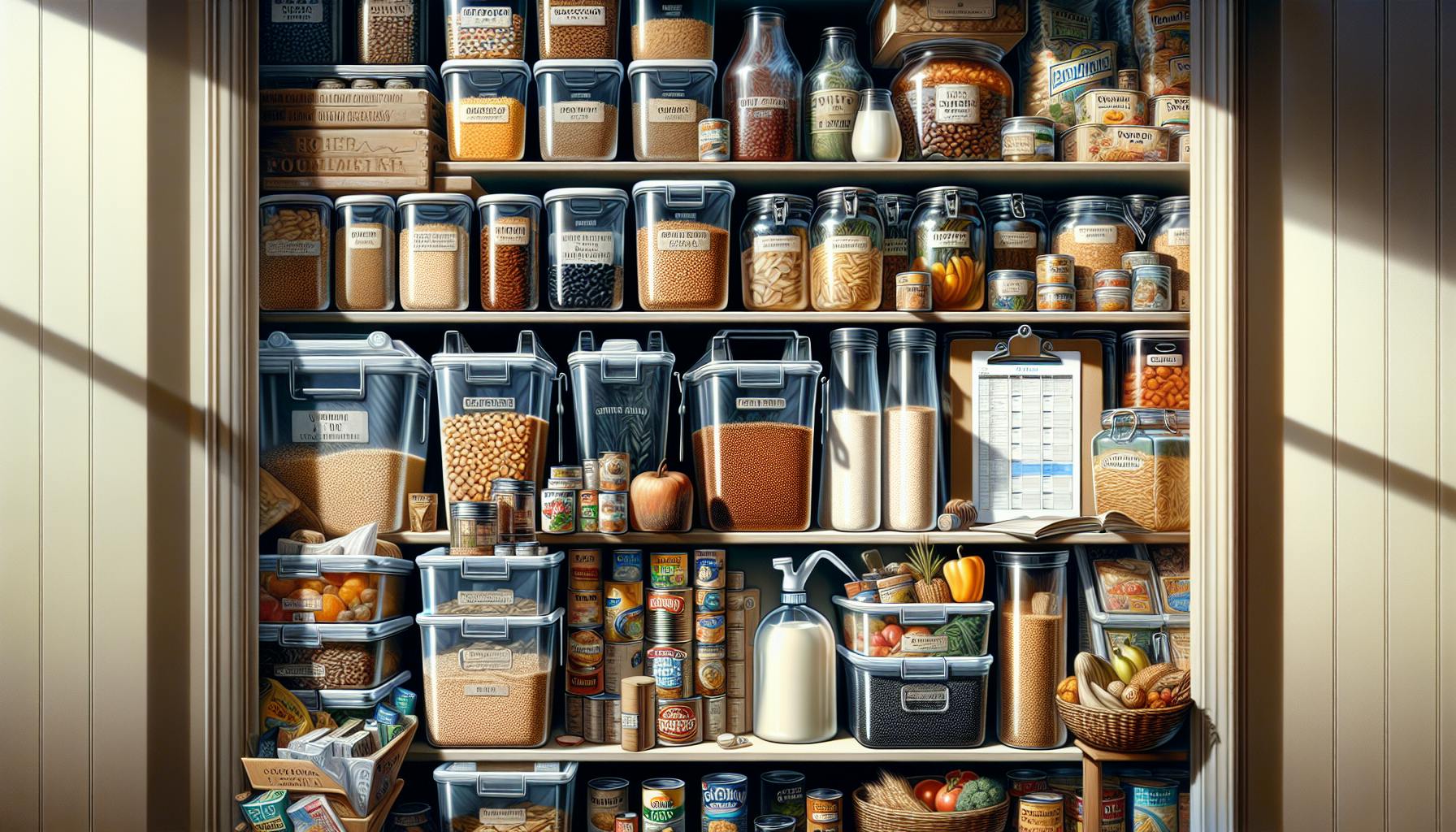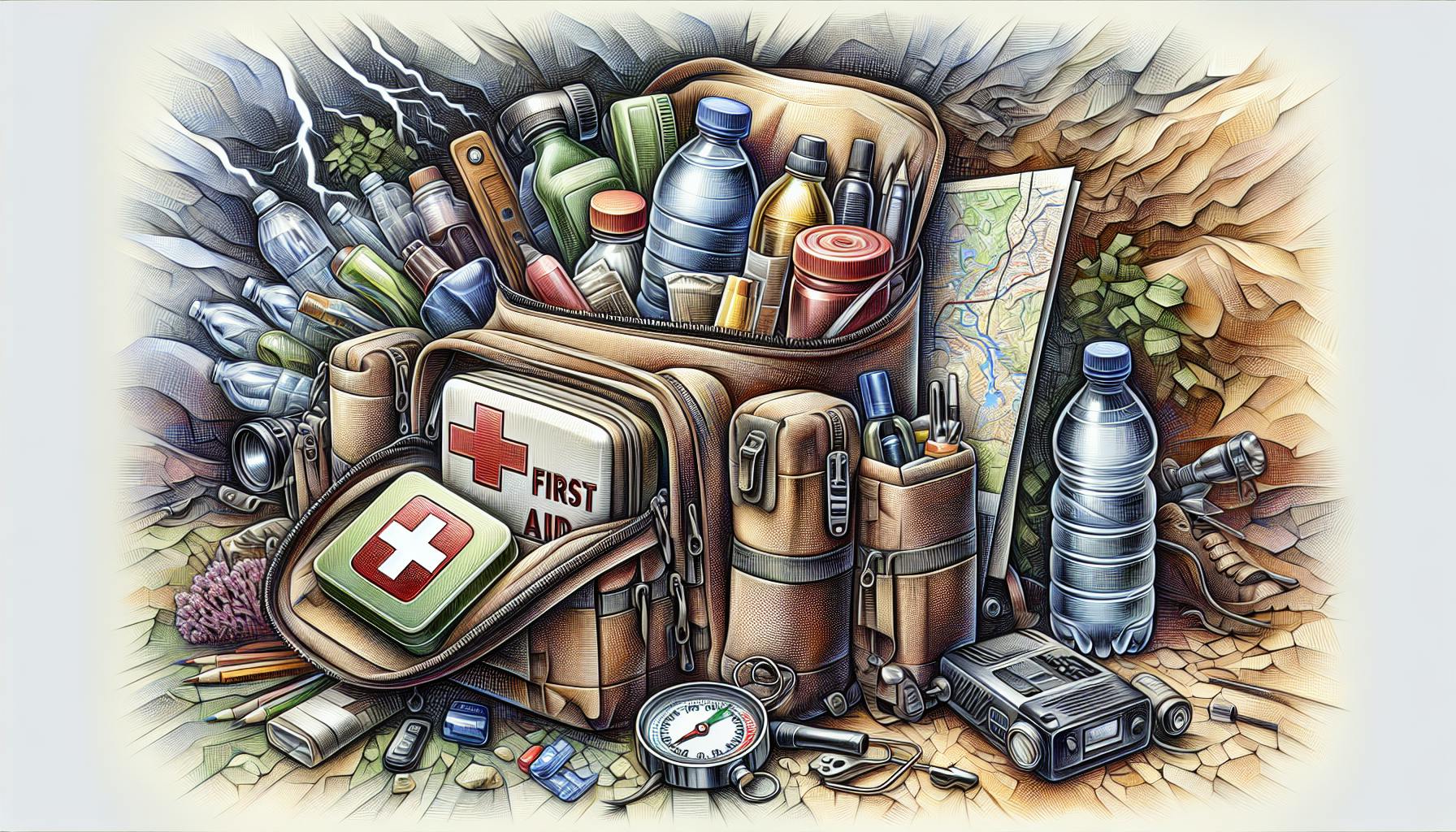Introduction to Maximizing Meal Prep Storage Time
Having properly stored emergency food supplies can make all the difference when disaster strikes. Knowing how to maximize meal prep storage time enables you to extend the shelf life of your food stocks and ensure you have reliable sustenance during unforeseen events.
Key factors like oxygen, light, moisture, and temperature all impact how long your meal preps will last when properly sealed and stored. Following best practices for blocking light, minimizing oxygen exposure, regulating temperature, and controlling humidity can significantly extend storage duration.
In this article, we’ll cover common causes of food spoilage, storage location considerations, proper packaging techniques, shelf life extension hacks, and inventory management strategies. With the right storage conditions and preparations, you can get the most out of your emergency food supplies when you need them the most.
Common Causes of Spoilage
Exposure to oxygen, light, moisture, and fluctuating temperatures are among the most common causes of food spoilage during storage. Oxygen enables oxidative rancidity, light degrades nutrients like riboflavin, and moisture promotes microbial growth. Storage areas with excessive humidity or inconsistent cooling also shorten shelf life.
Foods like nuts, whole grains, dehydrated fruits, and baked goods are especially susceptible to these ambient factors. Maintaining cool, dark, and dry storage conditions between 35-40°F with a relative humidity of 40-60% provides optimal longevity. WeLovePrepping offers food grade containers designed to exclude light and minimize oxygen and moisture within the ideal temperature range.
Storage Location Considerations
Where you store your emergency food stocks can impact how long they last. Pantries, basements, garages, and underground root cellars all have certain temperature, humidity, and light level advantages. Ease of regular access for rotating supplies is another consideration.
Pantries provide convenient access but temperature and humidity may fluctuate. Cellars offer consistent cooler temps but retrieving supplies can be challenging. Garages tend to enable better temperature regulation in some climates but can experience greater humidity. Evaluating the conditions of each spot in your home and property is key. WeLovePrepping provides guides for constructing different types of emergency food caches based on your location.
Proper Packaging Methods
How you package your meal preps also extends their shelf life by blocking oxygen, light, and moisture. Vacuum sealing excludes oxygen and enables long term storage. Freezer bags, aluminum foil, and thick opaque plastics help prevent light exposure. Oxygen absorbers like the FreshPax O2 absorbers and desiccant packs like the Dry&Dry humidity regulators actively regulate oxygen and moisture levels within containers.
WeLovePrepping offers complete vacuum sealer kits like the Foodsaver V4460 for DIY packaging. Be sure to label containers with contents and dates before sealing. Wrap or bag packages for additional light blocking. Store in cool, dark places to maximize duration.
Shelf Life Extension Hacks
Freezing, dehydrating, salting, canning, and bottling can enable significantly longer storage times beyond normal pantry conditions. Saturated fats and oils create a protective barrier against oxygen. Mylar bags and food grade plastic buckets like the Augason Farms 6-gallon pails are ideal for long-duration storage.
WeLovePrepping stocks a wide selection of long-term food buckets designed to last 25+ years. Just be sure to periodically inspect and rotate your stock using a First In, First Out method. The oldest emergency supplies should be replenished first after testing for quality.
Inventory Management Strategies
Managing your emergency food inventory properly is key to maximizing shelf life. Always track expiration or best by dates and follow First In, First Out rotation. Apps like Prepper's Pantry Tracker and software like The Living Pantry can help catalog storage locations and coordinate rotation. Take a regular full inventory checking for damaged containers or signs of spoilage.
Organizing by food groups or meal components can simplify planning and tracking as well. Ensure water and fuel supplies are also cataloged and rotated for emergencies. Taking the time to properly store and manage your food stocks can pay off tremendously when disasters strike.
Recommended Shelf Life by Food Type
To maximize the shelf life of different foods, it's important to understand how long they typically last under proper storage conditions:
-
Grains like rice, quinoa, and oats last 6-8 years with oxygen absorbers.
-
Dried beans and legumes can last 10+ years if kept cool and dry.
-
Dehydrated produce like apples and carrots often last 1-2 years frozen or vacuum sealed.
-
Canned goods like beans, soups, and vegetables typically last 2-5 years when stored in a cool, dark place.
-
Meats like beef jerky may last 1-2 years frozen or vacuum sealed with oxygen absorbers.
-
Nuts and seeds can last 6-12 months at room temp but often last 2+ years refrigerated or frozen.
-
Fats like coconut oil and shortening can last 2-5 years when stored cool. High-fat foods resist oxidation.
Consult our food storage guide for a detailed shelf life chart covering 100+ pantry items. Follow best practices like vacuum sealing, oxygen absorption, cool temps, and low humidity to get the maximum duration for each food type.
Key Factors for Maximizing Shelf Life
To get the most out of your emergency meal preps, you need to store them under the ideal conditions. Blocking light, minimizing oxygen exposure, regulating temperatures, and controlling humidity are the main factors that extend shelf life. Proper packaging, consideration of storage locations, and effective inventory management techniques also help.
Utilizing WeLovePrepping's specialized products and comprehensive guides enables you to optimize your storage operations for maximum duration, saving you time and money.
Managing Light Exposure
Light accelerates the degradation of riboflavin and other nutrients, so blocking it extends shelf life. Opaque containers, dark storage locations, and aluminized pouches all limit light exposure. WeLovePrepping's opaque food grade buckets are ideal for blocking light while also regulating temperature and humidity. Storing containers in boxes, bags, or wraps adds additional protection. Choose windowless storage areas whenever possible.
Oxygen Absorption Methods
By enabling oxidative rancidity, oxygen exposure shortens the shelf life of stored foods. Vacuum sealing, oxygen absorber packs, and freeze drying exclude oxygen for longer duration storage. WeLovePrepping provides complete oxygen absorber kits like the FreshPax 300cc absorbers to integrate with your packaging process.
When sealing containers, carefully exclude air pockets and use double-bagging or topping off techniques to minimize remaining oxygen. Removing oxygen is one of the most effective ways to extend shelf life.
Regulating Temperature Consistently
Keeping stored food between 35-40°F maximizes shelf life for most items. Refrigeration, freezing, and underground root cellars can all maintain the ideal temperature range. Avoid excessive fluctuation which causes condensation promoting spoilage. Consult WeLovePrepping's contingency guides for integrating refrigeration into your emergency planning.
Use thermometers and data loggers when possible to monitor conditions in your storage areas. Cooler temperatures dramatically slow deterioration while warmth accelerates it.
Controlling Humidity Levels
Excessive humidity enables faster microbial growth through moisture, so maintaining an ideal 40-60% relative humidity is recommended. Desiccants like the Dry&Dry 8 gram humidity absorbers actively regulate humidity within containers. Various types absorb differing amounts of moisture.
WeLovePrepping stocks food safe desiccant packs for your emergency supplies. Take additional steps to keep storage areas clean and dry. Regulating humidity along with temperature gives your food stocks the longest potential shelf life.
Warning Signs of Food Spoilage
Inspect emergency food supplies regularly for the following signs of spoilage:
- Mold growth
- Condensation inside packaging
- Rancid or "off" odors
- Textural changes like mushiness
- Discoloration
- Bulging or leaking containers
Discard anything exhibiting these warning signs to avoid foodborne illness. When in doubt, throw it out. Safety comes first when utilizing your long-term food stocks.
FIFO Inventory Management
First In, First Out inventory management means rotating stock and using the oldest supplies first. This ensures no products exceed their expiration or best by dates. Clearly labeling packages helps track dates and contents. Apps like Prepper's Pantry Tracker and software like The Living Pantry can catalog and coordinate supply rotation.
Inspect your emergency food inventory regularly for signs of spoilage, damage, or pest infestations. Replenish the oldest items with fresh stocks to maintain supply levels through diligent FIFO rotation. Keeping inventories organized and up to date takes work but pays dividends through extended shelf life.
Key Takeaways for Maximizing Meal Prep Storage
-
Block light exposure using opaque containers stored in dark locations.
-
Absorb oxygen with vacuum sealing, absorber packs, and eliminating air pockets.
-
Regulate temperatures consistently between 35-40°F if possible.
-
Control humidity using desiccants and keeping storage areas clean and dry.
-
Utilize FIFO rotation to use oldest food supplies first.
-
Catalog supplies with apps and software to enable easy tracking.
-
Inspect regularly for any signs of spoilage and discard questionable items.
Following proper storage, packaging, and inventory management practices enables you to maximize the shelf life of your emergency food supplies. Investing the time upfront pays off tremendously when disasters strike through reliable, nutritious sustenance exactly when you need it.
Conclusion
Storing emergency food using proper techniques is crucial to maximize shelf life. Blocking light, absorbing oxygen, regulating temperature and humidity, and managing inventories through FIFO rotation extends duration. WeLovePrepping's specialized products and comprehensive guides enable you to dial in storage conditions for making your meal preps last.
Having long-lasting food stocks can provide invaluable peace of mind and preparedness when disasters strike. With the right storage strategies, you can ensure nutritious supplies are on hand when you need them most. Be sure to research specialized methods like freeze drying, canning, and desiccants for your particular situation and needs. Investing the time into proper emergency meal prep storage pays big dividends through reliable sustenance during unexpected events.


